Two Great New Videos Wherein Teeth Get Knocked Out Of People's Mouths, And Richard Ford And Lorrie...
Two Great New Videos Wherein Teeth Get Knocked Out Of People’s Mouths, And Richard Ford And Lorrie Moore (Those Aren’t The People)
Solved: The mystery of how Detroit rapper Danny Brown lost his front tooth. And how Die Antwoord’s Ninja, from Johannesburg, lost his.
(I don’t think Ninja really lost his front teeth. If he did, I certainly hope that’s not how it happened.)
I really don’t like watching teeth get knocked out of people’s mouths. But these two videos are great anyway. The Die Antwoord one reminds me of the ending of Richard Ford’s Lay of the Land. Except it’s much better than that. I am forever a Richard Ford fan. He is my default answer to the impossible-to-answer question, “who is your favorite writer?” His short story collection Rock Springs is the book that first made me want to write myself. And The Sportswriter and Independence Day express, as well as any novels that I have ever read, the wholeness of what it feels like to go through a day seeing with human eyes, thinking with a human brain, feeling with human emotions. (Ford and Saul Bellow capture this experience most accurately for me, and Bellow I first picked up after reading an interview with Ford in which he cited Bellow as one of his favorites.) But, man, was I disappointed by Lay of the Land, and especially the ending that was so much like that Die Antwoord video. (Hard to believe, right? Lay of the Land is about an aging real estate agent in New Jersey. I was surprised myself.)
Still, I am psyched to read his new one, Canada. Reviewing it in The New Yorker a couple weeks ago (subscription required), Lorrie Moore wrote, “If one is looking for a powerful through-line of suspense and drama, one will not find it in this book: instead, one must take a more scenic and meditative trip. There are novels that are contraptions, configured like cages, traps, or fly-paper, to catch things and hold them. Canada is more contrary: searching and spliced open and self-interrupted by its short, slicing chapters, then carried along by a stream of brooding from a song and a brother with a hundred questions and only a few answers.”
I like a scenic and meditative trip. And brooding. There are few writers who can get as drunk on wordplay and rhyming as Lorrie Moore does and still be as awesome as she is. (Though, I felt similarly about her Gate at the Stairs as I did about Lay of the Land.) Her short stories are where it’s at. Like “Referential,” which she published, also in The New Yorker, the week after the review of Canada. It’s about the single mother of a teenage boy who has been institutionalized for a mental disorder and when you finish reading it you feel like you’ve just had a tooth knocked out of your mouth. But in a good way.
Take These Broken Wings, From 'This Is Your Captain Speaking'
Take These Broken Wings, From ‘This Is Your Captain Speaking’
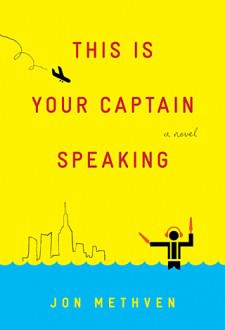
Jon Methven’s comedic new novel, This Is Your Captain Speaking, out today from Simon & Schuster, takes up the lives of plane passengers who survive a miraculous Captain Sully-type landing in the Hudson River only to find themselves in the midst of a massive conspiracy. Here’s how everything starts.
Air Wanderlust Flight 2921 crested the skyline that separated New York City from the heavens then banked a soft right into a raspberry sun. It climbed against an insatiable gravity and skipped toward an archipelago of pinkish clouds, a flat stone across a blessed sea. The captain tipped a left wing to the drifting metropolis. The passengers on that side, first class and coach and the man who had snuck on standby, lifted their chins toward the city, apex of human ingenuity, and snapped pictures on their cellular phones despite having been told to holster them until landing. Passengers blind to the city squinted in the other direction at the almighty orb, celestial and stunning, off the eastern wing, and they pointed devices at the wistful sun warming and lighting the earth, and tugging it about the universe.
They were a gorgeous cargo, more attractive than the average flight, which made the morning ascent pleasant. Peaceful, syrupy, with the passengers content to know they would have their breakfast once the plane reached 30,000 feet. They would sip coffee and watch television monitors attached to the seats in front of them, and bask in the understanding that they were part of a connected and well-informed citizenry, everything as it should be, healthy plumes erupting from the plane’s gills.
Then a startling explosion. It stuttered the plane; several passengers gasped and the man in Seat 26F hid his cell phone beneath his leg — as if his attempt at sending a sunrise photograph back to earthlings had somehow interfered with the mechanics.
The captain overhead, “Ladies and gent — ”, but that was all he got out before a second explosion choked the other engine.
Silence; 160,000 pounds of metal and fuel floating on a cool breeze; everyone waiting for the conclusive boom. In the cockpit a mad dash of knobs as some knucklehead at LaGuardia inquired what sort of mess they found themselves in that Monday morning.
“Twenty-nine-twenty-one this is control trouble reading.”
“Bird strike bird brain,” the captain said. “Lost thrust in both engines. Turning back home, hoss.”
“Copy that.” A long pause, copilots shuffling through the engine restart manual. “Twenty-nine-twenty-one take runway one-six. That’s one-six.”
“One-six. Copy.” And then, “Can’t do it. We’ll be in . . .”
“Say again.”
“We’ll be in the Hudson.” He picked up the cabin radio. “This is Captain Hank Swagger.” It had been only seventeen seconds since his last dispatch, but to the flock behind him the silence seemed eternal. “Brace for impact, folks.”
They did their best bracing, which mostly involved squealing, fervent prayer, eyes hidden so they would not catch the gory parts. They spoke to God, to their fellow passengers, remnants of internal dialogue that were shouted tenderly:
Woman, Seat 17C: “HailMaryfullofgracetheLordiswiththeeblessed . . .”
Elderly man, Seat 19D: “Terrorists! What’d I tell you? Terrorists!”
“Just my luck,” came a man with a FRANK RIP tattoo on his forearm,
Seat 50B, forehead against Seat 49B: “Just my fucking luck.”
Second Officer, cockpit: “I’m feeling odd.”
Flight attendant: “Just like we practiced, just like we practiced.”
Man, Seat 22E: “I see smoke! Everyone, smoke!”
Teenager, Seat 23A: “Of course there’s smoke. We’re crashing, dipshit.”
Undercover sky marshal, Seat 9A, a giant man filling in a Sudoku puzzle.
“Screw it,” said a woman with a burlap sack covering her left arm past the elbow, Seat 3B.
“Might as well bury me with it.”
And then an epic plummet as the plane’s innards responded to the massive nothingness emanating from the engines. Captain Swagger banked the metal lug a hard left until it hung 7,000 feet over the Bronx, a patchwork of green and mostly brown twisting there in the basement for anyone with the mettle to glance. The trick was not in the landing. With gravity’s counsel, planes always landed, just not in ideal locations. No, the trick was to steer an unpowered Airbus into the water without striking bridges or toppling buildings.
“What do we got?” Swagger asked the copilots. Over the bridge, the water coming to meet them, the copilots remained intrigued with the restart manual, not quite set on the captain’s decision to baptize them in the Hudson and hoping for miraculous elevation. They shrugged collectively. “Come on, fellas, just say anything.”
First Officer David Miles turned to Second Officer Peter Wrinkles; Wrinkles seized violently, slumping sideways in his seat.
“Uh, Captain?”
“Quickly Miles!”
“Wrinkles, sir. I think he’s dead.”
Captain Swagger glanced sideways. “Wrinkles, knock that off!”
First Officer Miles shoved into the unconscious man’s shoulder. “He’s not waking up, sir.”
“Stay with me, Wrinkles!” Swagger glared into the control panel. “All right, you sonofabitch, one more time.”
The aircraft cleared the George Washington Bridge at 4,400 feet and Swagger steered it toward the center of the river, narrower and rougher than he had anticipated. The white folds suggested one- to two-foot swells; he had been counting on a slick, black mirror, and was impatient with the wind for being such a bastard on a Monday morning. There was little congestion in the way of ferries and tugboats, no cruise ships, floating cities that would have provided a wily game of chicken. He guided the avalanche gently. The center was where he wanted to be and he opened up a smooth path as he dropped elevation, the metropolis gliding past his left. There were no boats in his eye line as he settled on a patch a quarter-mile ahead. The sun had crested the city skyline, and the bright shaft of light across the dark water shone like a satin carpet. Second Officer Wrinkles groaned.
“Attaboy!” the captain encouraged.
It occurred to the passengers just before they ditched — a simultaneous occurrence, one they failed to discuss aloud, the colossal trepidation of all congealing into a single, phantom thought — and it went something like this: That in all those buildings tearing past, in all those square windows and lofty verandas where the smokers of the world had been segregated, how many dozens of hundreds of people at that very instant were pulling out cameras and cell phones and emailing and texting and tweeting and abusing other communication technologies that may have been invented in the three minutes since Flight AW2921 departed LaGuardia — and were homing in on the steel thunder just outside their dwelling? How many would enjoy their morning cup while gathered around the office television, watching police boats pull fuselage and severed limbs from the tainted drink, whispering awful, just awful to one another, unable to look away from the morning intrigue? They would be the evening news, the YouTube sensation of the week, and somewhere on dry land someone would get the clever idea of building a memorial and stocking it with fresh flowers on the anniversary two, three, twelve years in a row before that got tiresome and the city parks department would argue with the city highway department as to whose responsibility it was to weedwhack around it. How sad that their last thoughts, as they drifted adjacent to the morning sunrise, were not of family, love, better days spent, but of infamy, a complex and surreal infamy?
Three hundred feet and Captain Swagger lifted his chin now, cracking the bones in his hot neck. When the plane hit water it bounced for an instant before transforming into a pillowy plow, displacing thousands of gallons that resulted in a dwarfed and nearly touchable rainbow just outside the cabin windshield. There were shrieks from the rear followed by a marvelous whoooaaaahhhhh as the plane caught mysterious elevation then more water then more air then sploosh! It sank instantly, emerged, sank some more, an indecisive buoyancy. A moment later it popped like a fishing bobber to a roaring applause. Then Flight AW2921 floated to the surface, reflecting a gleaming city off its wet bow.
And so erupts our story, passengers, a piece of Americana — a bona fide miracle, a state-of-the-art, one-of-a-kind halle-fucking-lujah. As the plane sinks and the helicopters scurry; as the rescue boats embark and those with the wherewithal grope for the exits — we pause momentarily and call your attention to the puffy white contrails, forgotten and distant across the morning descent, where the jet exhaust and humidity combine into violent bursts blossoming in the morning blue.
From the ground we have always admired those tortured tails as another anxious tribe sets sail on a new adventure. We like to believe they are the exhaust of the passengers’ dreams and heroes and hopes and miracles and faiths and secrets, all distilled through gravity’s filter, pushed back where they belong toward this earth of ours, happily littering our heavens. We could stare at those fresh crests of fuel excrement all day, wondering reverently on their meaning. But some lady in 19 busted her ankle. And Second Officer Wrinkles’s heart is attacking him on the cockpit floor. And Captain Swagger must rescue 162 people in the next seventeen minutes to clinch this miracle.
Cue Monday morning.
From This Is Your Captain Speaking by Jon Methven. © 2012 by Jon Methven. Published by Simon & Schuster, Inc.
Jon Methven writes this site’s Analytically Speaking column. This Is Your Captain Speaking can be ordered here. He can be reached here, or follow him on Twitter @jonmethven.
Is Bingo the Greatest Invention of All Time? (A: YES)

When you play nine cards, there is still downtime — you hear the number, you stamp what needs to be stamped, and you look up and wait a moment to hear the next number — but double that and there’s no time to wait and barely any to look up. You become less of a bingo player than a bingo machine, entering a trance of B-11’s and O-72’s that isn’t broken until someone finally shouts bingo and the room lets out a collective moan. Often, the calls are premature or incorrect, but many people trash their cards regardless, as if the game ends not when a bingo is confirmed but when the focus is interrupted.
— GOD I LOVE MULTITASKING A FLEET OF BINGO CARDS. It’s the cleanest high of all! Plus there’s nothing better than housing a bunch of grabby old folks. Except, I suspect, being old and housing a bunch of stupid kids.
'You're Not The First Person To Have Felt These Things": Advice From The Authors Guild Dinner
by Jane Hu
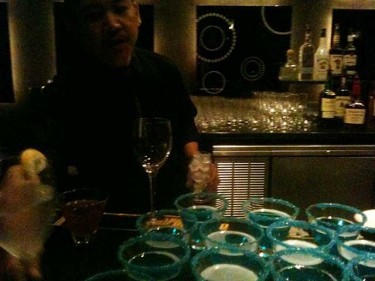
I recently moved to New York for the summer, and last night I had my first introduction to the literary parties here at the Authors Guild Centennial Gala, held at the Edison Ballroom in Midtown. There were about 500 people there, and the event was officially black tie, though the publicist told me any party dress would do. I coat-checked a cardigan. Since moving here, I’ve had some questions about how lit life works in New York. Questions like, can you do this without being part of a “scene,” and how much of this involves posturing? etc. As the night progressed, I discovered that however awkward you appear, people will kindly overlook that so long as you can hold up your end of the conversation — and that drinking always helps. Initially just invited for cocktails, I ended up staying for dinner. And happily so since the bartender wouldn’t give me drinks because I didn’t have a license or an ID card. Which is how I got my first two pieces of New York literary-party advice, courtesy of novelist Alexander Chee: In New York, always bring ID. And at dinner, don’t try to help the waiter do his thing. If you do, it’ll always be weird because it’ll always be different.
The event coincided with a recent revival of the guild’s case against Google Books (first filed in 2005), which, just the other week, became a class-action suit. But at the event, the case was never mentioned; instead, the focus was on the guild’s centennial and its continued support of the rights for so many individual writers. Someone waved at Ann Patchett. Someone something independent bookstore. David Rakoff being funny. Fuzzy, warm, bookish feelings.
So! How do you cover such an event? Do you take photographs of the people, the food, the centerpieces?

Calvin Trillin hosted and at one point stood right by me, but I felt weird asking for photographs so this is what you get:
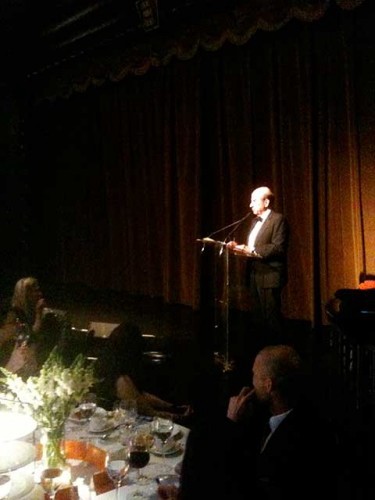
As you’ll see, the same went for the night’s four speakers, who were Andy Borowitz, Patricia Marx, David Rakoff and Sarah Jones.
While last year’s Authors Guild Dinner honored Terry Gross, this centennial event avoided spotlighting any one author. Instead, each speaker picked one canonical text to reject (there were two women speakers but the canon was represented by an all-male cast). As though speaking from the position of an editor, the speakers advised aspiring authors such as F. Scott Fitzgerald and Homer that literary success (if not posterity) lies in the pursuit of popularity rather than the pose of pretension. Why not 50 Shades of Penelope or Eat, Slay, Love as a title for the story of Odysseus, Marx offered.

Rakoff shut down On the Road, telling the young Kerouac that editing would do him some good. You’re not the “first person to have felt these things.” It was excellent, and a roundabout way of commenting on the culture of individual blogging (which, according to my table, is apparently way out of style. Talk of groups with a brand or an image were mentioned, like The Millions, The New Inquiry and N+1.)
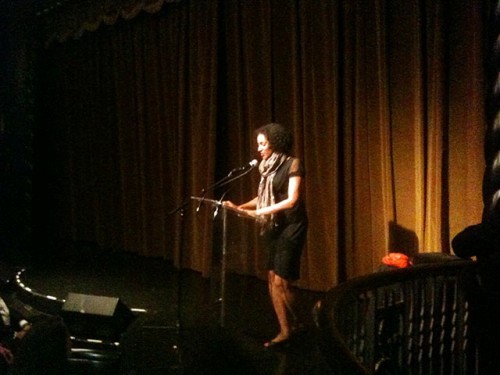
Jones told off Strunk & White’s The Elements of Style (which, on behalf of many writers: thank you!!!), telling them that instead of following their rules of keeping it short and simple, maybe she’ll submit an 80-page college paper titled “The Tyranny of Brevity.” (Funny because I think this happens more often than not?) It’s “Restrictulous,” Jones suggested, because it’s “so strict it’s ridiculous.” Whereupon I learned, giggle too loudly behind someone and they will turn to look at you.
The black-tie crowd.
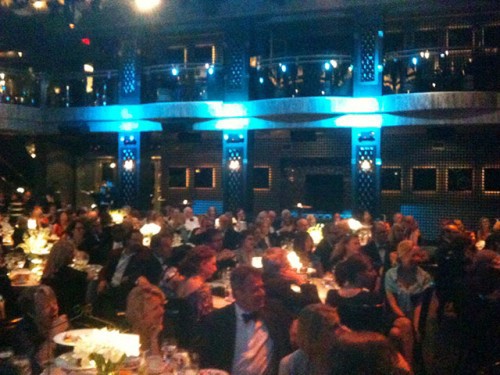
Upon exiting, I heard a man ask two women: “Are you novelist ladies or publishing ladies?” Oh.
On the subway ride home, print was having a moment in the form of Road Dahl.

Jane Hu coat-checks her cardigan.
Crispy = Awesome
Why do we like crispy, crunchy things? Um, BECAUSE THEY’RE DELICIOUS? Oh, also there is some kind of biological reason involved.
You Suck Because You're Sad, Not Because You Suck

“Crushing guilt is a common symptom of depression, an observation that dates back to Sigmund Freud. Now, a new study finds a communication breakdown between two guilt-associated brain regions in people who have had depression. This so-called ‘decoupling’ of the regions may be why depressed people take small faux pas as evidence that they are complete failures. ‘If brain areas don’t communicate well, that would explain why you have the tendency to blame yourself for everything and not be able to tie that into specifics,’ study researcher Roland Zahn, a neruoscientist at the University of Manchester in the United Kingdom, told LiveScience.”
— I guess this makes me feel better about how terrible I am. [Via]
Photo by Yuri Arcurs, via Shutterstock
Sleeping Around Extremely Dangerous
One night stands can lead to lifelong relationships, so be careful out there.
Radiation Is Such A Shrew
“A Japanese research agency has dropped a controversial public relations campaign aimed at educating women about nuclear safety that compared radiation to the screaming voice of an angry wife.” [Illustration here]
How Much More Do Martinis Cost Today?

One of the more noteworthy qualities of the martini, the quality that sets it apart from all the other drinks mixed at your local watering hole, is the disproportionate effect it’s had in inspiring witticisms. Dorothy Parker, as usual, leads the way, with this bit of light poetry: “I like to have a martini/Two at the very most/Three, I’m under the table/Four, I’m under the host.” James Thurber added, “One martini is all right, two is too many, and three is not enough.” Winston Churchill has a good one (maybe apocryphally) attributed to him, too: “Martinis are like breasts: One is not enough and three is too many.” Sure, whiskey may dominate country music, but the martini owns the bon mot.
Granted, all of those quotes are more than fifty years old. But even yet martinis are being ordered, quaffed, and (sometimes) regretted. You, yourself, may have ordered one recently, and if you have, you have no doubt noticed that it’s a drink that does not come without cost: at my local bar, a standard martini goes for $8. That’s not an insignificant bit of money, but if you adhere to the wisdom of Parker, Thurber, et al, then not a bank-breaker. But were the martinis they referenced, the ones that could leave you under the host (or really anyone, between you and me) the same martinis that we drink now? And after we adjust for inflation, will we find that they cost more now — or less?
***
When we speak of martinis, we are of course speaking of gin. I know this and you know this. To be on the safe side, I polled friends, acquaintances and strangers, all employed in the cocktail-mixing and associated industries, and the responses were emphatic — martinis equals gin. “A martini made with vodka is a vodka martini, which is in many martini drinkers’ eyes not a Martini,” said one respondent, a journalist who sometimes writes about food. And even the sole professional polled that admitted to preferring vodka martinis, a bartender in North Brooklyn, says that he “respects the old hardline Martinis are gin! that lots of old timers hold onto.” We will circle back to the vodka martini, but for our immediate purposes: Martinis are gin. Old-timers represent.
Fortunately, gin is fascinating. It’s about 800 years old, and it was first distilled in the Low Countries of Holland, Belgium, etc. It was first known as jenever, which is Dutch for juniper, as it was the juniper berries that gave it the distinctive taste. At the time, it was wine or brandy “cooked” with juniper, which were thought to have positive medicinal effect. By the 17th century, grain spirits were being used to make jenever instead of wine, although the product (Anglicized into genever, or simply Geneva) resembled more of a whiskey in flavor than the clear, floral gin to which we’re accustomed. At about the same time, the Dutch East India Company came into prominence (and by prominence we mean prominence, as for a while the Dutch East India Company was basically one of the most powerful governments in the world), which meant that the local genever was being shipped all across the globe. The key to the first wave of popularity of gin? Distribution.
Gin as we know it now is a product of English ingenuity, or at least the English willingness to advance adult beverage science. As the Dutch East India Company circled the globe, “strong water” houses were popular in Britain, selling to customers aqua vitae (i.e., hooch). While the rise of popularity of gin (an abbreviation of the Anglicization) may be difficult to divine in hindsight, there is one obvious proximate cause: the Glorious Revolution. In 1688, William of Orange, a Protestant gin-drinker from Holland, overthrew King James II, whereupon gin became the modish libation to demonstrate fealty to the crown.
Not long after the reign of William and Mary, gin became responsible for one of the first intoxicant epidemics to sweep an urban center. According to Lesley Jacobs Solmonson, writing in
Gin: A Global History:
Blue Ruin, Ladies’ Delight, Cuckold’s Comfort. The sobriquets for the eighteenth-century drug of choice were legion. Never before had England been so mesmerized by a beverage; never again would the city of London be as consistently intoxicated as it was between 1720 and 1751.
Eventually, of course, the British sobered up (to some extent), but they had vigorously embraced gin, and modified the recipe to London dry gin, which is most likely the gin of your martini. It’s a distilled grain spirit, flavored with a large variety of botanicals and herbals, the most prominent of which is, of course, juniper, which is the source of the “icky” that some find in the spirit. This is the reason why gin is rarely drunk straight up, and is largely taken with tonic, or with vermouth.
***
This brings us to the martini, which is a relatively recent invention (compared to gin itself). Let’s not even pretend that we don’t all know a bit more about cocktails than we did five or ten years ago — we are in the middle of a period of obsessive attention to all things foodie, be they the shoes of the horse that carried your heirloom tomatoes, or the mysterious origins of gussying up booze with additional ingredients, hand-crafted ice and oddly-shaped glasses. If you have sleeve garters that you slip on at home when filling the cocktail shaker, you can skip past this.
But for the benefit of those who take drink and have been up to now incurious, the story behind martinis goes something like this. The martini may have been invented in Martinez, California, during the Gold Rush, and then transported to San Francisco by a prospector who remembered the recipe of the “Martinez Special.” The martini may have sprang into being at the Knickerbocker Hotel in New York, whipped up by a recent immigrant by the name of Martini. The martini may have been invented by the father of the cocktail, “Professor” Jerry Thomas, a mid-Nineteenth Century mixologist who published the first recipe in his 1862 bartender’s manual, The Bon Vivant’s Companion, or, How To Mix Drinks. It’s a matter of some conjecture, and bickering (as is whether or not “martini” should be capitalized). The martini is not, however, derived from Martini & Rossi, the vermouth and sparkling wine company. But here’s what a martini is: a bunch of gin, a bit of vermouth and/or bitters or other flavoring agent, chilled, and served with a garnish of a twist of lemon (later, maybe an olive).
The martini was very popular during Prohibition, as gin was easy to make surreptitiously (such as in the bathtub), and the vermouth was useful in masking the terrible taste of gin that’s been made in the bathtub. And it’s about this time that the martini began to become an idée fixe. See, for example, this early scene from the first Thin Man movie (1934), as we’re introduced to William Powell as Nick Charles, instructing gathered barmen in the proprieties of shaking a martini. And we can start to discuss the price of martinis here. In 1936, at the Globe Copper Cocktail Lounge (not the bar that Nick Charles was in, FYI) in Los Angeles, you could order a Dry Martini for 25 cents. Adjusting that for inflation as we do, we arrive at the 2012 price of $4.14. And, hopefully, you got to see a movie star or two.
We again find the quarter martini a couple years later, in Chicago of 1940, at Gimbel’s Restaurant and Cocktail Lounge, on a block of West Randolph Street not far from the Cook County Court House and Grant Park. Above the bar was a motto, “LIVE — LAUGH- LOVE — THE MUMMIES HAVEN’T HAD ANY FUN FOR 3000 YEARS.” Mummies! Twenty-five cents then translates into $4.11 now.
By this time we’re smack in the middle of the golden age of the martini, from the Jazz Age, moving through World War II and easing into the post-War boom, when a cocktail set — shaker, swizzle stick, etc. — was as mundane a household object as an ashtray. And by now the martini had seeped so deep into the national consciousness that it becomes a fair topic for the writers. In 1948, Bernard DeVoto’s The Hour: A Cocktail Manifesto was published. DeVoto was a widely published magazine writer and historian, and the book is exactly what it sounds like. Naturally, the martini is given its due course. An excerpt concerning the same was republished by the Claremont Review of Books, which posits that there are only two permissible drinks for the Happy Hour — the slug of whiskey and the other one:
With the other cocktail we reach a fine and noble art, and we reach too the wars over the gospel that have parted brothers, wrecked marriages, and made enemies of friends. It is here that the heresies burgeon and the schismatics bay.
Martinis had moved by that point from refreshment to obsession. Yes, the martini may be the province of the witticism, but it is also a volatile topic. While the recipe may be basically simple (two liquors and a garnish), the exacting preparations, the ratio of the gin to the vermouth and the identify of the garnish in question are not easy things for two people to agree upon, now as then. Which is why, in the volumes written about the martini, the subject of the recipe for the Ideal Martini is either the main theme, or at least referenced. This makes, of course, for some fun reading, but it can get a little overwrought, especially when the Ideal Martini, as everyone knows, is the one that you’re thinking of in your own head.
Speaking of which, the other question I asked the pros I polled was what martini was the martini they would recommend to the first-time martini imbiber. I got some pretty good responses, though I will say that the majority of them tended to the “dirty” side, I guess in the hopes that the brine of the olives will tamp down the medicinal bite of the gin. But this is the one recipe that I will share as a gift to you. It is from Mike Mikos, bartender and one-half of The Cocktail Weenies, who perform live and in-person instructional cocktail shows. From Mikos:
I think the best place to start is somewhere in between the pre-prohibition Martini/Martinez and today’s dry gin Martini.
2.5 oz. dry gin
.5 oz. French dry vermouth (I prefer Dolin)
2 dashes orange bitters
twist of lemon
Stir the gin, vermouth and bitters for 30 seconds in a mixing glass with ice. Strain into a chilled cocktail glass and garnish with a twist of lemon. You better cut that twist over the drink, too.
We’ll give you a second to give that a shot.
***
The highlighted presence of the martini continued through the 50s and into the 60s, as WW2 vets became the Middle Class, and then the Man in the Grey Flannel suit became the height of career aspirations. At the Barbizon Plaza Hotel on Central Park South in Manhattan in 1950, a martini (along with all other cocktails and aperitifs) went for 60¢, or $5.73 converted. It’s a martini that cannot be had now, as the Barbizon Plaza is now a bunch of condos known as the Trump Parc. If there’s anyone that is antithetical to the appeal and savoir-faire of the martini, it may well be The Donald.

You could think of “Mad Men” as representative of this age, but that would be cheating; the three martini lunch was a real thing, and considered sophisticated, even if now it seems like something a teenager would try to get away with. But then, it was a lifestyle choice, as was the pitcher of martinis chilling in the fridge for Cocktail Hour. It was not a Gin Craze in the sense of the 18th-century gin craze, but the martini had become a symbol as potent as a new car or a three-bedroom in a suburb a respectable distance from the city. It was a sign that the drinker was no barroom sot, but rather a person of class and distinction, as meticulous in leisure as in business. (This was of course sometimes an exercise in self-deception, w/r/t the besotted-ness, it should be noted.)
But it was not just a Madison Avenue/Levittown thing. In 1966 at the historic Court of the Two Sisters, a New Orleans landmark in the heart of the French Quarter, if you were the type to bypass their signature Mint Julep and opt for the martini, the barman would probably do you the service of only making fun of you behind your back. And that would be a dandy martini nonetheless, and it would set you back $.95, which would be $6.75 now.
***
By the 70s, the martini was in decline. Part of the reason for this was the churn of generations. Just as the martini was the status symbol of the hard-working salaryman in the 60s, it was eschewed by young adults who came of age during the Summer of Love as, well, emblematic of the squares that preceded them. Food writer and historian James Villas wrote an article for Esquire entitled “The Social Status of the Martini” (collected in the invaluable The Booze Book, published by Playboy Press in 1974) that led the charge in defense of the martini, which succinctly describes the backlash:
While there can be no doubt that pinstripe suits and four-door sedans and plastic credit cards have never won the overwhelming approval of the present younger generation, no symbol of middle-class corruption stands our so blatantly or provokes more wrath in our junior citizens than the All-American Martini. An incurable and not so old Martini-fancier myself who also happens to enjoy part-time college teaching, I’ve been in key positions over the past decade to witness this age group’s brutal attack on the country’s most classic cocktail.
The popularity of the All-American Martini was waning, although Villas makes the point that while the martini as a symbol was losing favor, martinis were still the eminent cocktail order at such Manhattan hotspots as Friday’s and Maxwell’s Plum. The martini had adapted, you see, as a decades-long publicity campaign by manufacturers of vodka had resulted in the displacement of the gin in the martini. Vodka was being marketed as flavorless and odorless, thus appealing to those turned off by the unique flavor of gin, and to those in a position to fear the trace of cocktail being detected on the breath. Perhaps when you think of martinis you think of James Bond? Well, you should not, as that is a vodka martini (and don’t think that the vodka companies were not thrilled by Sean Connery/”shaken not stirred”).
Villas also did us the service of giving us a price for comparison, as he wrote, in support of the premise of the quiet endurance of the martini, “In airplanes: miniature bottles in plastic racks full of so-and-so company’s Martinis selling like hot cakes at a buck and a half.” That converts into a cool $7.00 now. And for purposes of further comparison, in 1976 diners in San Francisco could stop by the iconic Tadich Grill (now 160 years old!) and start with a Dry Martini for a mere $.90. That’s $3.64 now, and a total bargain.
By the 80s, the martini is in full wane. In fact, in reviewing the menus available from the various digital collections, it’s rare to see the martini listed, or even a list of cocktails, while wine lists abound. Diet fads were zinging back and forth across the country, and that coupled with the fact that California could actually grow wine grapes nearly killed the martini deader than a rotary phone. But we did find at least one restaurant, a joint with a view on Highway One in Big Sur, called Nepenthe, that was vending the martini in 1987. For this non-heart healthy cocktail, within a three hours’ drive of Berkeley and the empire slowly being built by Alice Waters.
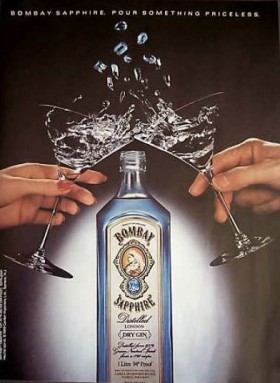
However, 1987 is also the year that gin (and martinis) began a resurgence, with the introduction of Bombay Sapphire London Dry Gin, which is a good gin, to be fair, but was launched with the marketing savvy of an iPhone, with an extensive print campaign of ads featuring only the sleekly designed bottle, with that cool blue color that seemingly doesn’t occur in nature. Gin, and the martini, were again a status symbol, and without irony — gin had attained luxury branding.
By 1995, the resurgence of the martini is in full blossom. Take, for example, the Depot in Torrance, California, located, aptly in a railway depot. They were for sure selling martinis, dude, and the “classic” cost $4.00 (or $6.04 now). But there is a reason that the martini had to be segregated as the “classic,” as listed right next to it on the menu are similar cocktails, something fruited, something Cajun, similarly served in the iconic martini glass but not martinis at all. It was the advent of the Martini Bar. It was a dark time. One taste of the chocalatini, or the bananatini, or the smoretini, or any word other than “mart” jammed onto the “-tini,” and you understand. And even though the trend swept the entire adult beverage industry, it was from the start most at home in establishments with names like Reminiscences or Mingles. Oh sure, it was a great period for froofy concoctions — and who doesn’t love a little froof? — but it was an embarrassment to the martini.
In 2002, The New Yorker ran a story by Roger Angell, a deft appraisal of where the martini was at, which includes a passage that sums up martini in the late 20th century:
It’s my theory — a guess, rather — that Martini drinking skipped a generation after Vietnam and marijuana came along. Many thousands of earlier suburban children, admitted to the dinner table or watching their parent’s parties from the next room, saw and heard the downside of the ritual — the raised voices and lowered control — and vowed to abandon the cocktail hour when they grew up. Some of them still blame Martinis for their parents’ divorces. Not until their children arrived and came of age did the slim glass and the delectable lift of the drink reassert itself, and carry us back to the beginning of this story.
By the 2000s, we’re learning at least one important lesson: not so many restaurants put cocktails on their menus anymore, and those that do are not listing martinis, or are listing an array of “From Our Bar” without listing the price. A small research problem. So we are going to go with the memory of the author, who is pretty certain that, in 2005, at the restaurant adjoining the hotel on the weekend of his wedding in Adamstown, Pennsylvania, the Black Horse, the martini he ordered after his rehearsal dinner was six American dollars. (Which martini was olives up, and not one of the ten or twenty monkeyed-up chimeras offered.) Believe it or not, that converts to $7.07 today.
And now we’re back to now, which we’re familiar with, because we’re soaking in it. To recap recent history, cocktails have exploded, and now, while everyone may have a confused idea of what speakeasies were actually like, they at least know what “bespoke” means. We are hopefully on the downhill side of the Speakeasy Movement, but we are at least grateful that, in between the kitsch and the chintz and the exaggerated effort, the barman watching himself in the mirror as he slowly shakes the shaker a fixed number of times, there are some pretty good honest martinis out there to be had.
***
Let’s crunch the numbers. Below are the martinis referenced above with the establishment that sold it, with the prices adjusted to 2012 dollars:
1936: $4.14 (Globe Copper Cocktail Lounge)
1940: $4.11 (Gimbel’s)
1950: $5.73 (Barbizon Hotel)
1966: $6.75 (The Court of the Two Sisters)
1974: $7.00 (airplane bottle)
1976: $3.64 (Tadich Grill)
1987: $7.09 (Nepenthe)
1995: $6.04 (The Depot)
2005: $7.07 (The Black Horse)
2012: $8.00 (writer’s local watering hole)
This looks like (with the exception of the Tadich Grill in 1976) a straight march upwards, a basic doubling in the price of a martini in the past eighty years. Of course there are many variables that make this less than scientific — these are different restaurants, some fancier, some less so, in different parts of the country, so it would be fair to expect some statistical looseness. But overall, it seems that our martini is more dear now than it ever has been.
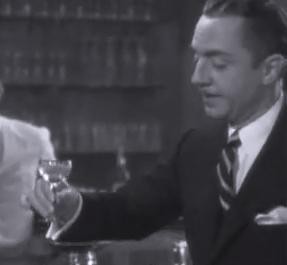
But do keep this in mind: the serving size of the martini has been slowly swelling. Look at “The Thin Man” footage, and notice that the glasses the martinis are served in seem comically small. Originally (and in Mikos’ recipe above), a martini was three ounces of fluid. And if you think back, or make a quick run down to your local T.G.I. Fridays, you will note that the normal (gargantuan) glasses popularly used now are big enough for a squirrel to take a bath in — sometimes six ounces or more. So the argument could be made that the price of the Martini per ounce has actually held pretty steady after all this time.
The section of DeVoto’s manifesto, noted above, is entitled “The Cocktail Hour: Do’s and Dont’s.” It ends with this bit of wisdom: “Remember always the three abominations are: (1) rum, (2) any other sweet drink, and (3) any mixed drink except one made of gin and dry vermouth in the ratio I have given.” We wouldn’t go so far as to nominate abominations of our own, as the appletini is technically “any mixed drink except…” So we will politely agree.
Previously: How Much More Does A Steak Dinner Cost Today and What It Cost Eight Women Writers To Make It In New York
